B.209
B.
Bulletin
New Zealand's leading
gallery magazine
Latest Issue
B.21501 Mar 2024

Interview
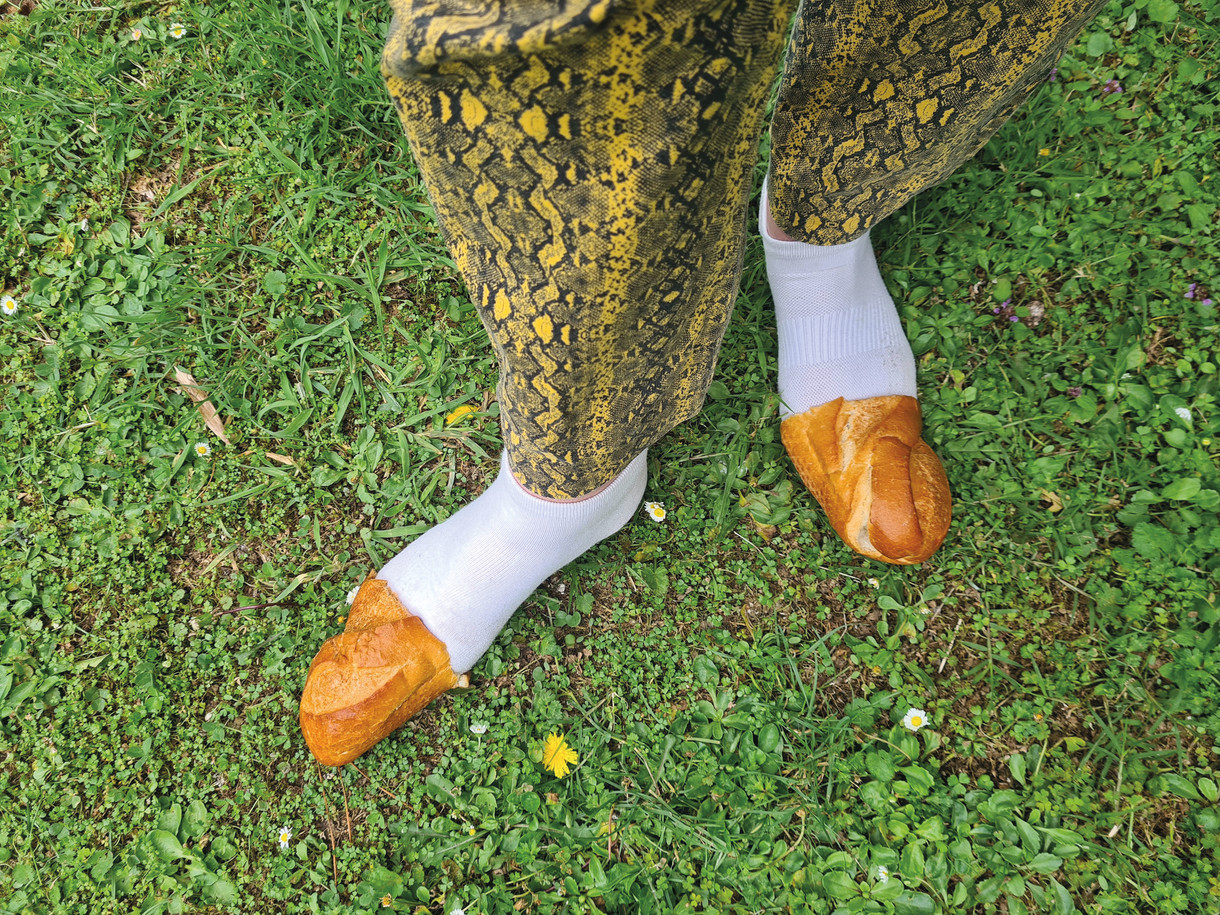
Pecking Order
Felicity Milburn: Judy, it’s great to be working with you again, this time on a work for the entry wall leading into our new collection rehang, Perilous. It’s made up of a frieze of photographic panels combining images of handwritten lists and pieces of bread that have been partially eaten away by birds, and you’ve called it Pecking Order. Can you tell us a little about how it came about?
Judy Darragh: Thanks, it’s great to have this new work included in Perilous, it was already in existence and fitted well with ideas in the show.
Life over lockdown became reduced – we were at home, everything was shut down and it became a surreal and shared experience for us all. While out walking I observed the flourishing of bird life, and I had time to hear and feed them in the back garden every day. Feeding the birds was very satisfying.
Interview
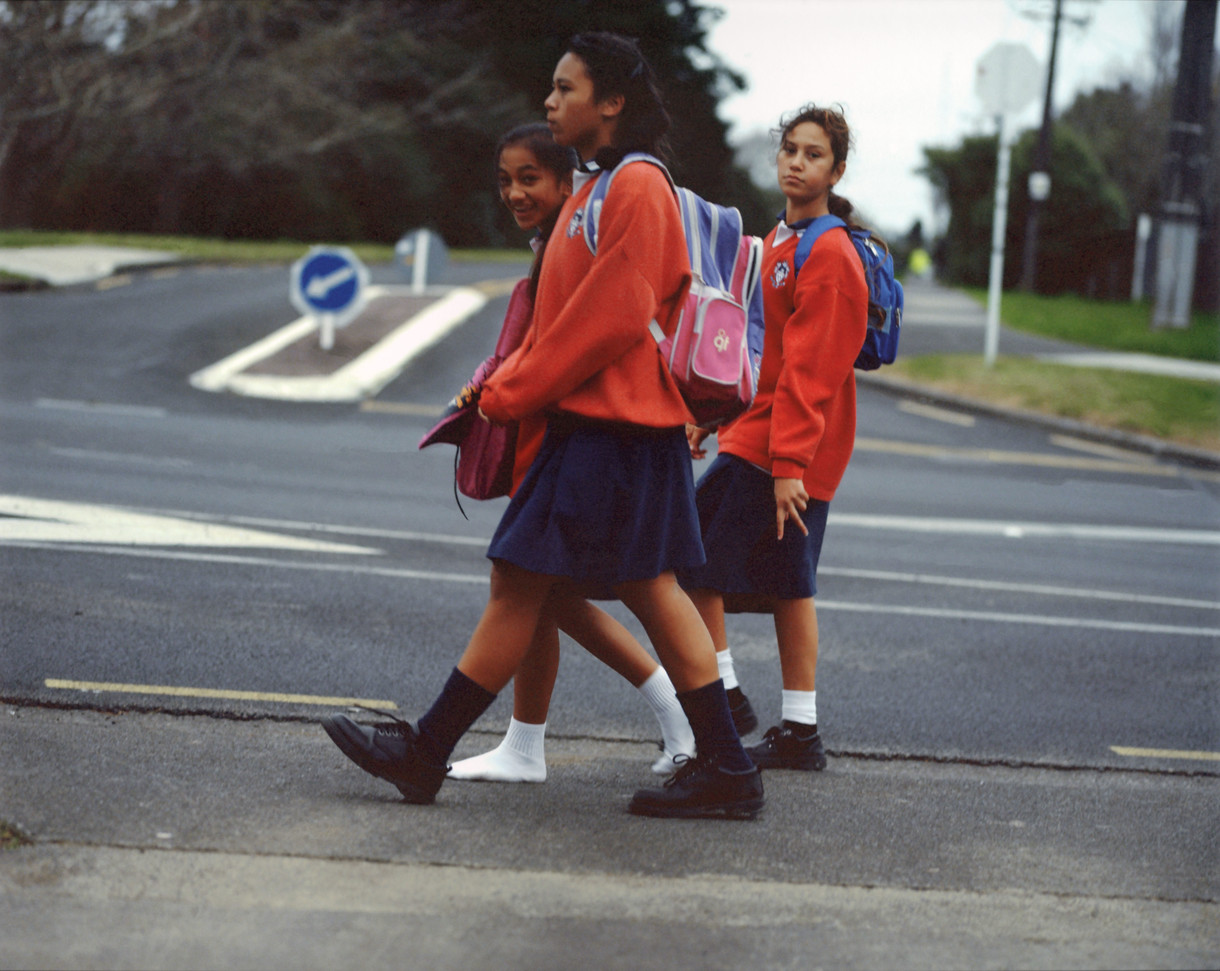
New Photographs in the Collection
Our new collection exhibition Perilous: Unheard Stories from the Collection features a number of newly acquired works from Aotearoa New Zealand artists that expand our contemporary photographic collection. Melanie Oliver asked a few of these artists to share their thoughts on photography and the works that have found a new home at Christchurch Art Gallery Te Puna o Waiwhetū.
Commentary
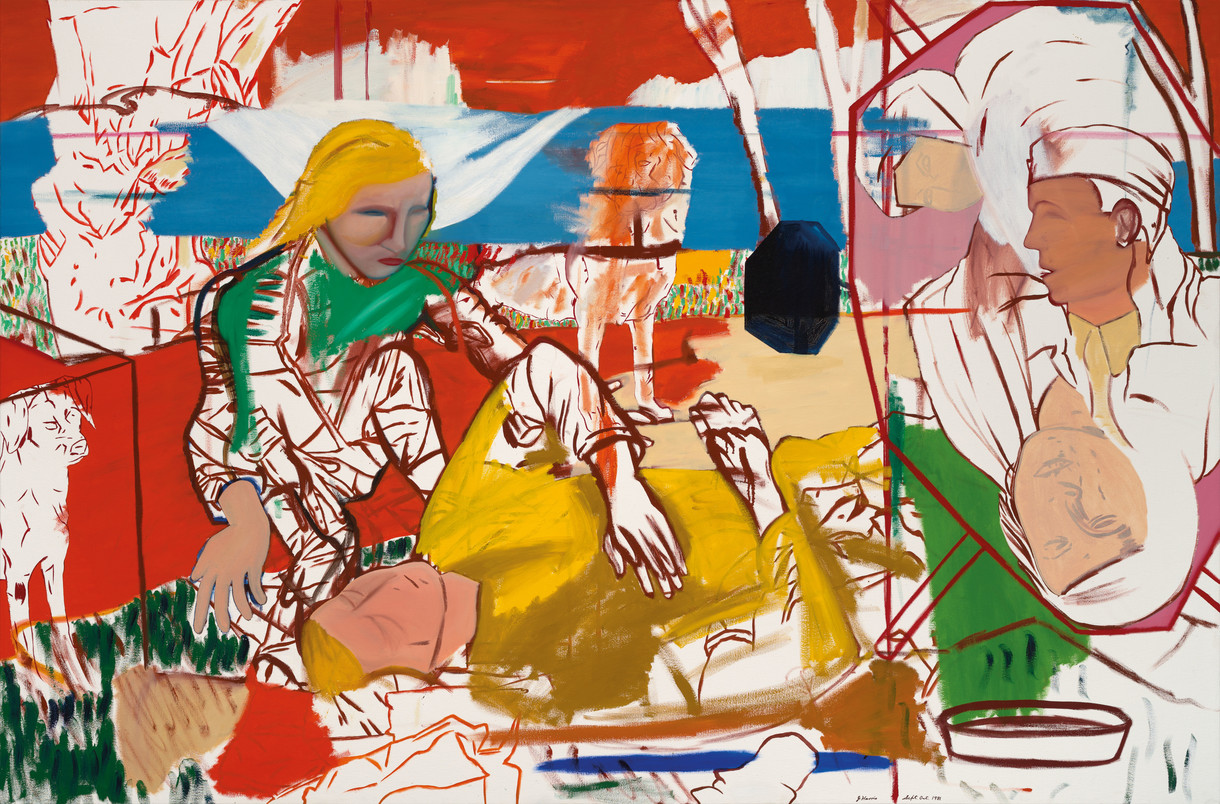
The Gift
"I was born in Akaroa and grew up on Banks Peninsula. My parents have a farm there. I went to high school in Rangiora, then worked in Christchurch for three years before going to Dunedin. I grew up in a fairly isolated environment. In my three years in Christchurch nothing really happened to me. There were no outward changes in my life. I had no friends there. I was quite alone – and I started to paint."
Commentary
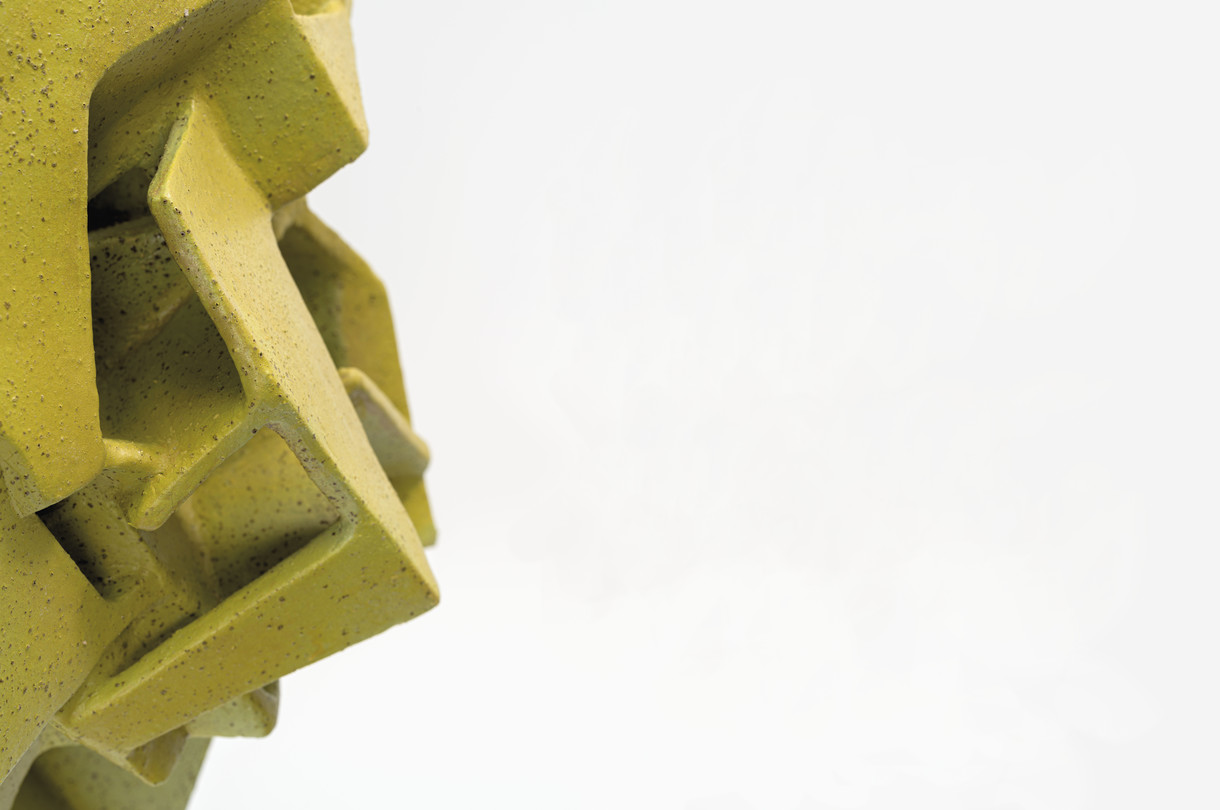
Improvising Protection
It is mid-winter, and Cheryl Lucas is making work right down to the wire. The survey Shaped by Schist and Scoria opens at the end of August, and she has been working without a break since being awarded the Creative New Zealand Craft/Object Fellowship in 2019. This timespan, which will be inevitably thought of as the start of the Covid years, saw Lucas develop a new body of work that responded to a deep need, personal and societal, for protection while continuing to take risks. Protection from contagions, from financial hardship, food insecurity, the cost of living, global warming, economic recession and the violence that invariably attends disasters, big and small. Protection from whatever is coming at you. But not to deflect it, to integrate it, to use it as fuel. Grist to the mill.
Commentary

Impasse after impasse
"Reinventions can be local, low-key, small scale and subtle in their specific effects."
Allan Smith, 1995
Among the selection of paintings that make up Delirium Crossing, Barbara Tuck’s Iris Gate stands apart. Painted in 1999, it is the earliest work in the show. Rather than the single square paintings that follow, this is a set of six rectangular canvases. Though small in scale, they are notable for their gestural vigour and looseness, their coloured grounds looking stubbornly like painted surfaces upon which figural elements float like collage fragments. No airy atmospherics, vertiginous perspectives, intricate tracery: ‘landscape’ has yet to appear. Equally, recalling earlier works, Iris Gate departs from the shaped, multipart, laser-cut aluminium paintings for which the artist became known in the early 1990s. Against the flow of art history, it marks a return to convention, in both format and facture, a backwards move to rectilinearity and the brush.
My Favourite
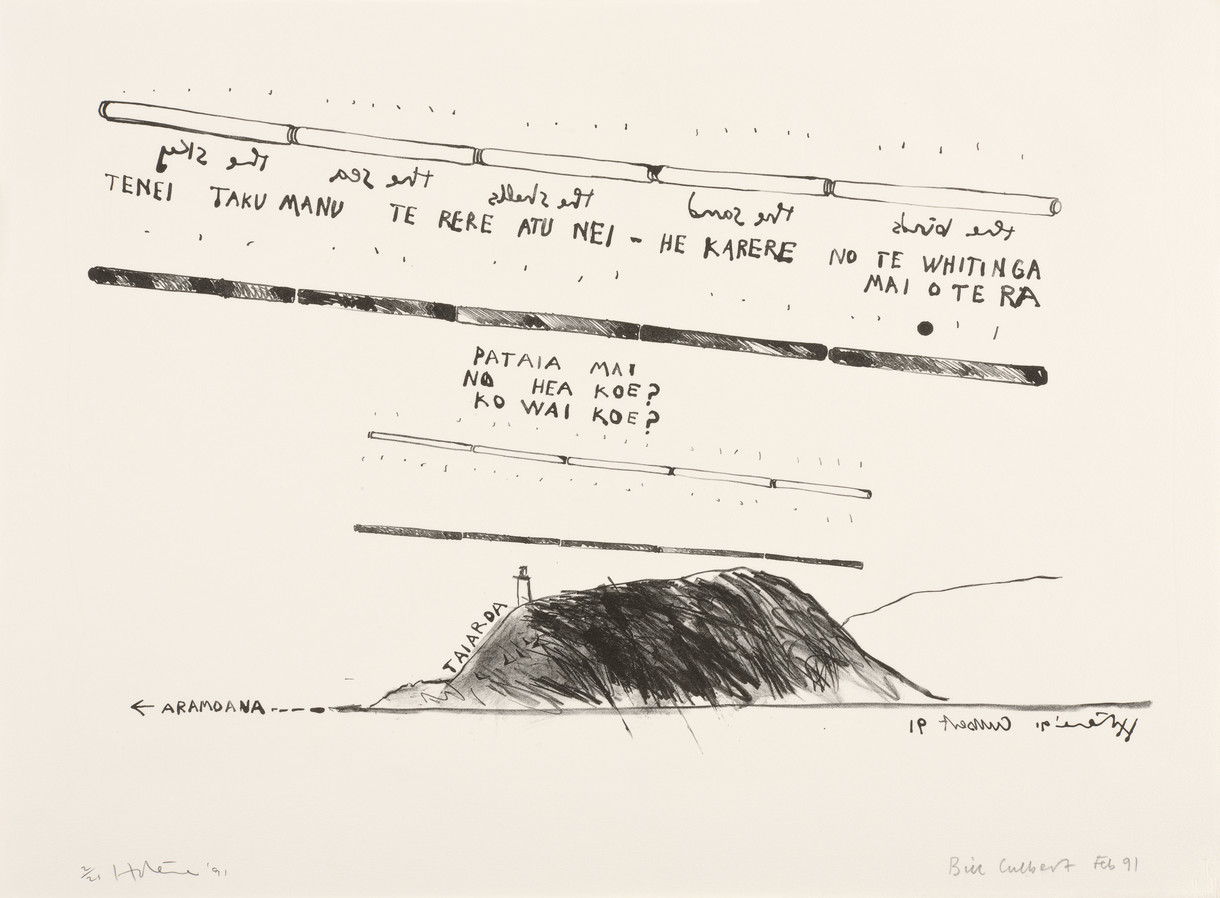
Bill Culbert and Ralph Hotere: Pathway to the Sea – Aramoana
My time working at Te Puna o Waiwhetū was strewn with highlights, but key among these is the experience of hanging Ralph Hotere and Bill Culbert’s Pathway to the Sea – Aramoana (1991), which was also my first experience of seeing this work up close and personal. Although not the greatest work or most popular work of art in the collection, this lithograph will always be special to me. I love the sparse aesthetic, the sense of a light touch. The bold decision to not occupy the whole page as the collaborators examine restraint, notations of the relevance of place and connections.




